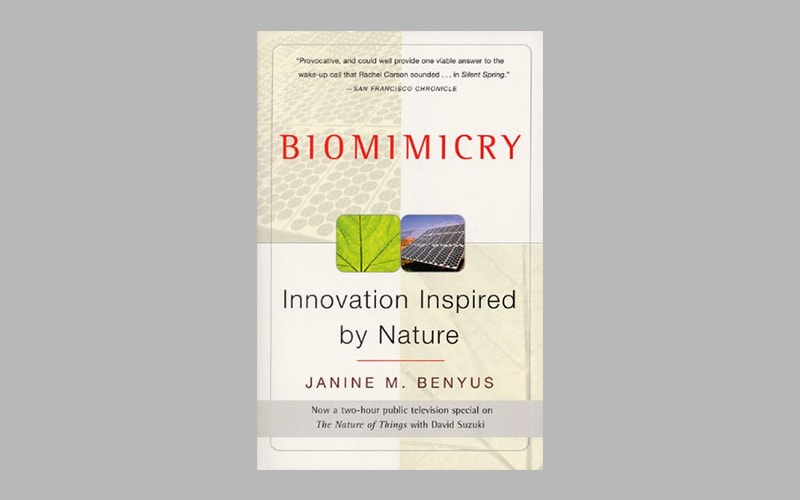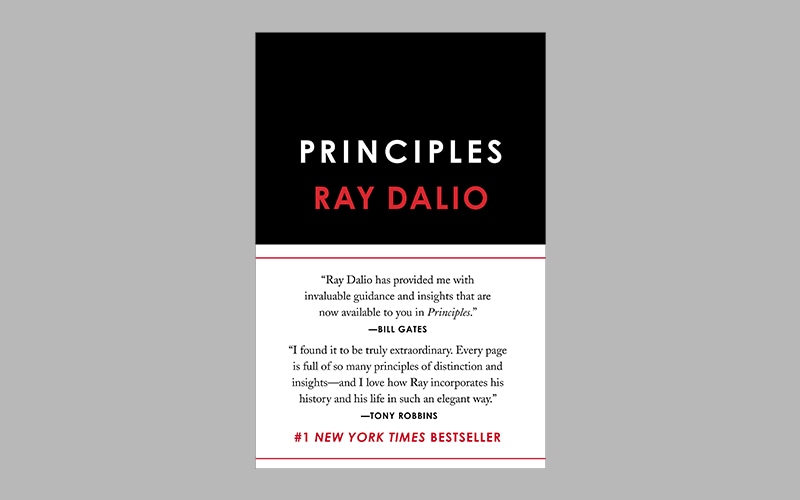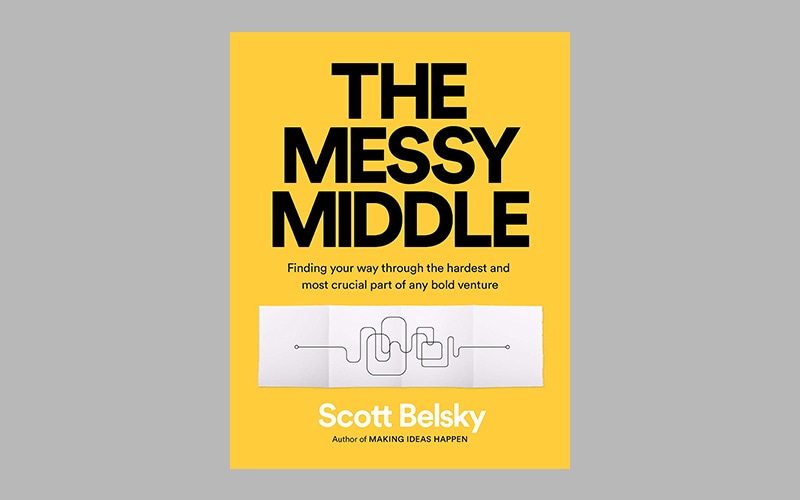
-
Nicole Miller on Nature and Inspired Innovation
22 Sep 2020
-
Nicole Miller, Managing Director of Biomimicry 3.8, explains biomimicry and how mirroring nature’s designs can lead to innovative and sustainable solutions in the development products and places.
Hosted by Jeff Kavanaugh, VP and Head of the Infosys Knowledge Institute.
“We are reconnecting people to nature so that nature is no longer just seen as this resource that we can extract from, but as a mentor and a resource that we can learn from.”
- Nicole Miller
Show Notes
-
00:05
Jeff introduces biomimicry
-
00:21
As managing director of Biomimicry 3.8, you described biomimicry as the conscious emulation of nature's genius. Can you share a particularly poignant example of this?
-
02:10
Jeff introduces Nicole
-
03:48
What is the perennial question for you? Certainly for me, what is biomimicry?
-
05:39
What's one of your favorite examples that you took to a business executive and they had an “aha” moment and changed what they were doing?
-
08:31
[Aligning people with common interests] is good because you get them to metaphorically be on the same side of the desk negotiating, it's a little bit easier, right?
-
09:28
How has your understanding of sustainability changed over time and how can companies get in front of it in their innovation process?
-
11:13
If you don't design or act in a way that allows your species, your habitat to do this in the future, you're not successful and you'll go extinct.” So, how do you relate that to where we are currently globally and with people in general mindsets?
-
12:09
You mentioned COVID-19 so I'll just go straight there. How has that impacted the business case for Biomimicry 3.8? And what your message and how can companies adapt to this new corporate habitat and avoid extinction?
-
13:36
Last month we spoke with John Elkington, the originator of the “triple bottom line” concept of people, planet, and profit. John described the triple bottom line as a genetic code, a triple helix of change for tomorrow's capitalism. What role does biomimicry play in the triple bottom line in this change?
-
15:04
What concrete steps can an executive take, not for this thing to be a check the box ESG initiative but to be at the center of their business?
-
16:26
John Elkington called the 2020s the decade of exponential progress, exponential decade. Do you think we'll see exponential progress, and if so, where do you think it will come from?
-
18:16
How do you think biomimicry will support the development of smart buildings and smart cities?
-
20:20
That all sounds great and if we were going out building a city from scratch and building brand new greenfield area sounds exciting, difficult but exciting, what about for the 90 plus percent in the world, yeah, it was already built, how can biomimicry principles improve upon these brownfield environments?
-
21:51
How can biomimicry design be applied to the digital world and how do you see technologies like AI fitting into this?
-
23:22
You're thinking then a lot about the next generation, what is what you're doing and all this mean for a young person looking to make their way in the 21st century?
-
24:59
You've called mycelium your favorite organism? What is it and why is it your favorite?
-
26:04
What are the books or people that stand out as significant influences for you?
-
27:57
What online resources do you recommend either your own sites or others for further learning?

Jeff Kavanaugh Biomimicry, nature as a model, nature as a measure and nature as a mentor. Taken from the Greek word for life, “bios,” and imitation, “mimesis,” biomimicry is innovation inspired by nature and 3.8 billion years of evolution. Nicole Miller, as managing director of Biomimicry 3.8, you described biomimicry as the conscious emulation of nature's genius. Can you share a particularly poignant example of this?

Nicole Miller That definition was created by Janine Benyus, the cofounder of Biomimicry 3.8 and author of Biomimicry: Innovation Inspired by Nature. And it's the definition we use at B38 because it's how we approach biomimicry. So, biomimicry is most known and identified with emulating strategies and patterns found in nature to help solve problems. So, for example, applying swarm logic of ants that never bump into each other as they harvest leaves off the forest floor to develop algorithms for self-driving cars, or looking at polar bears to understand thermal regulation and apply that to materials that help regulate temperature.

Nicole Miller So, these are often what we hear of is that emulation of nature. And these can actually be done in a way that loses the integrity and brilliance of nature's designs so you can create a new material that regulates temperature, but it's with toxic ingredients and a process with negative externalities that causes harm to people and the planet. So, that's not what nature does, right? All designs in nature create conditions that are conducive to all life. And that is how we do biomimicry. We are consciously looking at the strategies and patterns to drive innovation.

Nicole Miller And we do so with an ethos to create solutions that benefit all parts of the system. And our approach is done so in a way that we are reconnecting people to nature so that nature is no longer just seen as this resource that we can extract from, but as you mentioned, a mentor and a resource that we can learn from.

Jeff Kavanaugh And making sense of nature and inspired innovation is what we'll be exploring in today's conversation. Welcome to the Knowledge Institute podcast where we talk with experts on business trends, deconstruct main ideas and share their insights. I'm Jeff Kavanaugh, Head of the Infosys Knowledge Institute. Today, we're here with Nicole Miller, Managing Director of Biomimicry 3.8, a Certified B Corporation dedicated to help transform the world by emulating nature's designs and core principles. The company's mission is to train, equip and connect the world.

Jeff Kavanaugh This includes engineers, educators, architects, designers, business leaders, and other innovators to sustainably emulate nature 3.8 billion years of brilliant designs and strategies. Whether it's looking to native ecosystems to build factories that function like forests or setting the armor-like abalone shell to help capture carbon, Biomimicry 3.8 helps organizations turn time tested biological strategies into sustainable solutions, for the likes of Google, Unilever, J&J, Target, Interface, Estee Lauder, and a lot of other leading Fortune 100 innovators.

Jeff Kavanaugh Prior to joining Biomimicry 3.8 in 2012, Nicole was the Managing Director of the Montana World Trade Center and Director of International Sourcing for Overstock.com, where she built that division from scratch, taking it to more than 35 million in sales. She holds a bachelor's degree in Business Administration from University of Montana, and a fellow of Columbia University's American Assembly Next Generation Project through review of US Global Policy and the Future of International Institutions. She's also on the advisory board for the Biomimicry Center at Arizona State University.

Jeff Kavanaugh Nicole has been profiled in feature stories in The Wall Street Journal and Time magazine and profiled in Digital IQ Magazine. Nicole also received the Utah Business 30 under 30 Award for her work at Overstock.com and was subsequently awarded 20 under 40 by the Missoulian for her work at Biomimicry 3.8. Nicole, thanks so much for joining us.

Nicole Miller Thanks so much for having me, Jeff. It's great to be here.

Jeff Kavanaugh Well, what is the perennial question for you? Certainly for me, what is biomimicry?

Nicole Miller You said it well in terms of, if you break down the word, bio meaning life and mimicry to mimic, it's mimicking nature and using, so our company name, Biomimicry 3.8, it's leaning into those 3.8 billion years of R&D in nature to find innovative strategies and solutions to solve some of our most vexing challenges we face today.

Nicole Miller Biomimicry at its core is systems thinking, right? If you look at nature, nature doesn't do any one thing in isolation. It's part of a complex system, a connected system. And from a perspective of what is different about it is that it forces us to think in systems, it forces us to look at a product and material and not just that single product and that single supply chain but what are the materials on the front end of that, going into that, what is it after the fact.

Nicole Miller So, really not only just the lifecycle assessment of the product but then all of the kind of processes and systems and kind of support of that. It's really giving you a tool to think kind of more holistically about your approach in terms of what you're designing. And when we use the word design, I gave a product example, but we use it in the most broad sense of the word design, right? We are all designers. You are a designer, as host of this podcast, you are a designer of gathering, collecting information, disseminating information. Teachers are designers of communication.

Nicole Miller Our HR teams are designers of systems. I and other CEOs are designers of strategy. So, what it helps us do as kind of designers of our world is think more holistically about our approach versus focusing on generating income or return on investment for something that's very short term, or looking at holistic approaches that are kind of long term and benefiting all parts of the system.

Jeff Kavanaugh You mentioned all these great examples from nature. What's one of your favorite examples that you took to a business executive and they had an “aha” moment and changed what they were doing?

Nicole Miller I think some of my favorite moments that I've experienced in biomimicry are not the quick sound bites that you see. I mean, there's some beautiful examples of biomimicry products like Ornilux glass which has a web-like lines in the glass that reflect UV light. They're invisible to humans but they can be seen by birds, right? This idea came from the Orb-weaver spider which spins webs with ultraviolet reflective strands of silk to prevent birds from flying into them, right. So that's like a traditional example of biomimicry.

Nicole Miller And oftentimes companies come to us and they're like, we want a biomimicry innovation, we want something like the Ornilux glass to create a quick win. And what I like to remind people is some of the most powerful examples of biomimicry are not the next “it” product that we see often in kind of the sound bites around biomimicry. But some of the, I think, best examples I've seen are examples that really demonstrate kind of the power of biomimicry from a decision making standpoint and an alignment standpoint.

Nicole Miller I'll give you an example. We were working on a project with the US Forest Service. It was a visitor center in the mountains near Las Vegas, Nevada. There were multiple stakeholder groups, federal government, local government, local tribes, community members, and they all had different ideas of how this visitor center can and should represent their community in their place. And the building had to be designed and built in a way that kept the operational cost low, 70% of a building's costs are actually in the operations so it had to be designed in a way that kept that low.

Nicole Miller The building was in the high mountain desert so it was hot during the day and cold at night. And so, conventional building would have AC running all day and heat running all night to maintain this "comfortable temperature." So our team was looking at strategies from nature in that local ecosystem, looking at species that manage countercurrent heat exchange and which ones do that really well.

Nicole Miller And so, when we identified these strategies and presented them to the broader stakeholder group, we were able to reach alignment in a group that wasn't really aligned for the most part around what the center should be because the strategies that we came up with were place based. And the group, the stakeholder group, they were familiar with those species, they were familiar with these ideas, they were familiar with the ecosystem. And the strategies that we presented gave solutions that honored those species and that place. And so, their ability to have consensus and to kind of align that decision making process was really powerful to watch and to see.

Nicole Miller And that aligning people based on what they cared about in that park, it's not a sexy sound bite, but it's a really good example of how nature and nature inspired strategies help people come together and reach consensus.

Jeff Kavanaugh So, alignment based on purpose not profits.

Nicole Miller Exactly.

Jeff Kavanaugh All right. It is good because you get them to metaphorically be on the same side of the desk negotiating, it's a little bit easier, right?

Nicole Miller Yeah. And I always kind of say, "No one really hates nature," right? And it can really help democratize the conversation, right? If you're talking about manufacturing teams versus management teams, and there can often be a “us versus them.” And if we start to give strategies of mutualisms and how teams can work together based on nature, they start to see themselves as those roles that they play in the context of nature, and it's no longer this kind of us versus them, but, oh, we all are characters in this ecosystem and these are the roles that we play. So, I've seen it being used in a really fascinating way to kind of democratize the conversation that can often be contentious because people can really quickly drop into relating to nature.

Jeff Kavanaugh Well, this is very much related to sustainability. You mentioned that in almost every response so far. Let's get it on the table. How has your understanding of sustainability changed over time and how can companies get in front of it in their innovation process?

Nicole Miller I think for me, I started in sustainability in probably 2002 which is kind of when Corporate Social Responsibility reporting first started becoming the norm. And at that time, I was very much working on global supply chain for Overstock.com and looking at social compliance and then environmental compliance. And so, when I first started working in sustainability, I was working on issue-related topics, so a particular material or a particular manufacturing center.

Nicole Miller And so, for me, what has evolved over time is that system's view of it and that sustainability is not about a toxic ingredient and removing that. It's not about making sure a single factory is operating in a socially compliant way. Sustainability is actually looking at something for the long term and in a systems perspective. And actually, I don't love the word sustainability, and I think maybe a lot of people in this space don't because I don't want to be sustainable. I want to go above and beyond that. I want the work that we are doing and the companies that we're supporting not only to be sustainable, yes, of course, overtime, that should be the minimum. But I want it to be something that is positive and regenerative to the communities in which they serve and operate. And so for me, it's really become much more holistic in terms of not about doing less bad but more about how do we become positive contributors in the products and services and facilities that we operate.

Jeff Kavanaugh It's pretty practical upbeat message. In the past, I want to play a few words back for you, a little more stark and sober, “nature has a way of creating inherently sustainable designs because it has to succeed. Quite simply, if you don't design or act in a way that allows your species, your habitat to do this in the future, you're not successful and you'll go extinct.” So, how do you relate that to where we are currently globally and with people in general mindsets?

Nicole Miller So, success in nature is that your species lives on, that's success, it's that simple. And to do that, the way nature typically does that is it takes care of its place, right? By taking care of your place, by creating those conditions that allow for your species to live and be healthy and to thrive, that's what enables your species to live on.

Nicole Miller I think now in the wake of COVID and everything that's happening, we really kind of revealed the fragility of our systems and how now is just such an incredible time to kind of be reevaluating and looking at our systems and designing them in a way that is regenerative, that is creating those conditions for future generations to thrive.

Jeff Kavanaugh Well, you mentioned COVID-19 so I'll just go straight there. How has that impacted the business case for Biomimicry 3.8? And what your message and how can companies adapt to this new corporate habitat and avoid extinction?

Nicole Miller Well, I mean, going back to the fragility of systems, right, like we need systems that are more resilient, and I think nature is probably the best blueprint for resilient design. So I think, one, by having people kind of exposed to the fragility of the processes and the systems that do exist. I think people have been questioning those and saying, "Hah, okay, this might not be the best strategy for a resilient future," and knowing that there's so much uncertainty in how climate change will play out in everything that is happening, having a resilient system is probably the best business case that you can make right now and being able to be adaptable to changing conditions and having that resiliency.

Nicole Miller So, I think for us in terms of how biomimicry has become a key part of that conversation is that nature gives us those blueprints. And what I often tell business people is that biomimicry is like your best source of mitigating risk because you've got that strategy that's there. And so, if you're really looking to mitigate that future risk, we can lean into these 3.8 billion years of R&D to at least start that conversation or how are we going to redesign our systems that are more resilient and adaptable for the future?

Jeff Kavanaugh Last month we spoke with John Elkington, the originator of the “triple bottom line” concept of people, planet, and profit. John described the triple bottom line as a genetic code, a triple helix of change for tomorrow's capitalism. What role does biomimicry play in the triple bottom line in this change?

Nicole Miller Yeah. Man, I love John Elkington. And, as I mentioned in our kind of brief intro, he's one of my favorite people on the planet. And I think one of the things that he talks about in Green Swans is these wicked problems that we are facing now. And these are problems that can't be solved by traditional systems and the systems that we have in place now. And so for me, what where I think biomimicry really kind of plays this role is helping us to tackle some of these wicked problems that are not only kind of exacerbating some of the issues and contributing to them but how do we get beyond that with new ways of addressing those problems?

Nicole Miller: So, I think to come back to what John Elkington talks about in terms of the triple bottom line, what biomimicry does is not only give us an entire new way to kind of solve a challenge that benefits people and planet and addresses kind of economic needs. But it gives us kind of this systems map to do so, so that we're not kind of starting from scratch, right? We've got these kind of great ideas and great opportunities and strategies and patterns and deep patterns that we can pull from to start to think more holistically in terms of how we are going to design.

Jeff Kavanaugh And you've mentioned before that you want it to be at the center of global business. What concrete steps can an executive take, not for this thing to be a check the box ESG initiative but to be at the center of their business?

Nicole Miller You’re not going to be able to generate profit if you're doing so at the expense of the planet or at the expense of people. And I think we're aware and conscious of that now as a species. And so, what are the businesses that are regenerative and creating positive impact to people and the planet and are addressing these issues?

Nicole Miller So, I think to be at the center of business, to be a future leader, you have to be addressing those issues. And I think where biomimicry is such an incredible tool for that is that, again, it's that holistic approach, right? You're not looking at any single issue in a myopic viewpoint. It kind of forces you to kind of step back and think holistically about your processes. So I think for business leaders that are looking to kind of be the next or to maintain their leadership position, what are the tools that enable them to support progress and positive movement towards promoting benefits to the environment and people. And so I think that's where biomimicry can and has been a really supportive tool in that process.

Jeff Kavanaugh Once again, we're here with Nicole Miller, Managing Director of Biomimicry 3.8, the world's leading bio-inspired consultancy. Nicole, with respect to achieving the United Nations Global Sustainable Development Goals or SDG targets, John Elkington called the 2020s the decade of exponential progress, exponential decade. Do you think we'll see exponential progress, and if so, where do you think it will come from?

Nicole Miller I do, probably because I am an eternal optimist. So I do think that the fragility that has been exposed with COVID-19 and the way that our systems are no longer benefiting us, I do think that 2020 has been an awakening and it will allow for exponential progress as we move forward. And we're seeing that in our work. We're seeing that in terms of how companies are looking at how their performance is contributing to their kind of position in the world.

Nicole Miller And one of my favorite projects right now is a project we're working on called Project Positive which has really kind of taken the shift from doing less bad in terms of what is a corporation's responsibility, but how are we acting in a way that is regenerative to our community, to the environment and to the communities in which we operate? And I think that kind of thinking, we're working with companies like Google and Microsoft and Kohler and Interface, they're on board with this thinking.

Nicole Miller They recognize the need to no longer just have sustainability be kind of the side project or something that they report in their sustainability report but really entrenched in the ethos of the company and how they go about governing and performing and really seeing that in the appetite for companies right now, we have to do more, we have to be moving towards this place of regenerative, to me, is a really strong signal that we are moving in the right direction and we are going to make progress.

Jeff Kavanaugh I believe you've partnered with a company called HOK for a long time. And it's the idea of smart buildings, smart cities, another idea near and dear to our hearts. How do you think biomimicry will support the development of smart buildings and smart cities?

Nicole Miller Essentially, what we're doing now is we're designing facilities that are working towards creating ecosystem services, this was really built on this idea that our cities, our communities, our buildings, could function like the “forest next door,” and that would be true sustainability. If our buildings and our cities were generating ecosystem services like the forest next door, then we would reach this place of long term sustainability. So, what does that mean?

Nicole Miller So, the forest next door, right, the ecosystem services that it's generating is sequestering carbon, it's filtering air, it's cleaning water. These are the benefits that we as humans get for free from nature, and it does it all day long for us for free, and we benefit from that. So, we kind of came up with this concept of, well, what would that look like if our buildings performed like the forest next door, if it was generating as much clean air, if it was sequestering as much carbon, if it was creating that much biodiversity.

Nicole Miller And if that became the performance standard for the city, for the building and, again, instead of this moving away from this less bad and reductive framework or goal, we were looking at this framework of what does it look like to be positive? What does it look like to be regenerative? And how do we design cities that are creating these ecosystem services?

Nicole Miller And so we can do a baseline measurement of how that forest is performing and how that city or building is performing. And that performance gap of the city or the facility and the forest next door becomes the performance gap that we're solving for, and then design interventions that can help us move towards positive design. So you can imagine at a city, and we actually just did this work with Kate Raworth and her team at Doughnut Economics for the city of Amsterdam. And what does it look like for a city to really look holistically around, what does it look like to thrive locally and globally looking at both kind of social and ecological factors?

Jeff Kavanaugh Well, that all sounds great and if we were going out building a city from scratch and building brand new greenfield area sounds exciting, difficult but exciting, what about for the 90 plus percent in the world, yeah, it was already built, how can biomimicry principles improve upon these brownfield environments?

Nicole Miller We don't have the luxury of building new cities so I wish that was the case. But, yeah, most of our projects are existing cities and existing buildings. And so, looking at that kind of gap between how the wildlands next door are creating benefits and how our buildings typically aren't, looking at that performance gap really helps us to kind of prioritize what are the needs of that community and if it's clean water, for example, what are the design interventions and particularly what are the design interventions that we can glean from nature in terms of creating systems that are filtering water, cleaning water, restoring water, in that existing context of that building and that environment.

Nicole Miller We really had to lean into the fact that at first we thought just creating kind of the strategies would help them on that path. But now we're getting really into the cost benefit analysis to really help them understand what are the design strategies that we can implement at this brownfield site that will start to move the needle and what do we do in five years versus 10 versus 30 versus 50? And how do we start to look at those changing conditions and how do we create designs that can be adaptable for that?

Jeff Kavanaugh Our discussion so far at least with biomimicry seems primarily focused on the physical world. How can biomimicry design be applied to the digital world and how do you see technologies like AI fitting into this?

Nicole Miller Yeah. I think some of the most exciting examples around biomimicry are in algorithms, right, that we can learn from. I think one that's been kind of talked about a lot is bone algorithm. And studying bone algorithm in terms of kind of creating new ways of thinking about kind of processes and systems and coding. So, I do you think there are kind of a handful of examples, some sort to cross the line of bio- kind of utilization and there's been some about like the RoboBees, these flying robots, so actually they look like the bees themselves.

Nicole Miller But there's a great example of a technology that used swarm technologies and used those algorithms in terms of how organisms such as ants, bees, birds, actually use decentralized communication for devices to talk to one another in a way that turn signals on and off and really applied kind of that at a technical level. So I think there's really kind of no end to how it's applied. I think the scientific research is getting deeper in finding and adapting designs from nature. So I think we'll see more and more in this space. I know MIT and a handful of other, the Wyss Institute, has really done a lot around looking at some of these strategies in natures and really applying them to AI and technology in specific.

Jeff Kavanaugh: I believe you're a fellow at the Columbia University's American Assembly, is it Next Generation Project?

Nicole Miller: Yeah, correct.

Jeff Kavanaugh: Well, you're thinking then a lot about the next generation, what is what you're doing and all this mean for a young person looking to make their way in the 21st century?

Nicole Miller: There's a couple reasons why I do this work. One, I mean, I'm a fifth generation Montanan, I grew up in Montana and I had the luxury of, I think, always being in awe of nature, always being in nature. So, I want to make sure it's here. I have a five-year-old daughter. I want to make sure that she gets to experience everything I got to experience as a child in terms of going to Glacier National Park and actually seeing glaciers and having those experiences.

Nicole Miller: So for me, so much of why I do this is because I want to protect the place that I call home. I'm so fortunate to live and have been raised in Montana and I want to protect that and I had the luxury of traveling the world and opening an office in Shanghai and being in other parts of the world and also seeing and appreciate that beauty.

Nicole Miller: And I think through my work, I've seen how our consumption and everything that we do in terms of how our current economic systems function are at the expense of the environment and people. And so for me, the next generation is all about creating systems and processes and businesses that are not at the expense of them but that are to the benefit of both the environment and people. So, for me, that's what I'm most passionate about in terms of this work. We, as a human species, are incredibly brilliant. We can design better and we have the blueprints to do so. So, I'm most passionate about working with the designers of our world to create those in a way that enables future generations to have the luxuries we've had.

Jeff Kavanaugh You've called mycelium your favorite organism? What is it and why is it your favorite?

Nicole Miller I's one of my favorite organisms because it's a connector. So mycelium is, it's the system underground that is connecting trees to one another, connecting plants to one another, and is this kind of communicator. I mean, there's entire books written on this. It's purely fascinating. But what I loved about it was this idea that there was this kind of underground system that was communicating to one another for the benefit of the whole ecosystem, right, that whole forest.

Nicole Miller It was signaling to say, "Hey, there's a disease over here. Let me send you some signals so that you can start to protect yourself against that so that it's not going to affect you." So, this whole idea that this network, this communicator network for the benefit, right, I think oftentimes in kind of human design systems, the communication systems are for the benefit of a single, a very transactional relationship. And I think what I found so exciting about this is this was something a communication network that was really in service to the whole.

Jeff Kavanaugh What are the books or people that stand out as significant influences for you?

Nicole Miller I've had a few. Obviously, Janine Benyus, the founder of our organization. Her work has been pretty impactful for me. Also, I think Patrick Byrne who is the CEO of Overstock.com. He taught me a lot. I met him in Montana and I was getting a master's degree in economics at that time. And he said, I can teach you more about how the world works by coming to work for my company than you can in a four-year institution. So, really kind of giving me that opportunity, giving me some autonomy to kind of build a sourcing division to do some of the work I did, was just a really powerful learning experience. And so he's obviously a big influencer for me.

Nicole Miller And then I think what's so great now about our ability to kind of tap into so many brilliant leaders around the world. I listen to podcasts that are mostly oriented around business and the environment. And one of the things I've loved and the trend I've seen is that even if you're reading like a traditional business book like Ray Dalio, in his Principles book, throughout that book, if you notice, he references nature over and over again. So, one of the things I've really kind of grown to love is as I read any sort of business book or any sort of kind of new kind of thinking or strategy, how much nature has kind of been embedded in that? So, that's another book that I've taken a lot of value from.

Nicole Miller Scott Belsky's The Messy Middle is one I really like. In terms of podcasts, I do probably regularly listen to Tim Ferriss, his podcast. I'm a big fan of Rich Roll. Dr. Zach Bushv is another person who I think is doing some really brilliant work around biodiversity and its intersection with pandemics. So, man, there's just so much right now. I… there's too much and I don't know how to take it all in. I wish my whole day was dedicated to reading because there's just some really brilliant, fascinating work out there.

Jeff Kavanaugh What online resources do you recommend either your own sites or others for further learning?

Nicole Miller Well, definitely our site biomimicry.net. You can learn a lot there. We have a blog called synapse.bio which kind of takes a lot of our thinking and the work that we're doing and kind of shares that out. We also have a sister nonprofit called The Biomimicry Institute, and their site is great biomimicry.org. And then they have a whole platform called the to P which is incredible. It's one of my favorite sites where you can literally type in thermal regulation and see different strategies in terms of how nature does that. So those are great resources as well.

Nicole Miller The whole field of biomimicry is growing and there's a lot surfacing. Zygote Quarterly is a brilliant publication, visually stunning and beautiful with lots of great content. So, yeah, those are some immediate ones that come to mind.

Jeff Kavanaugh And everyone, you can find details for this abundance of information and all of our show notes and transcripts at infosys.com/IKI in our podcast section. Nicole, thank you for your time and a very interesting discussion.

Nicole Miller Thank you so much for having me.

Jeff Kavanaugh Everyone, you've been listening to the Knowledge Institute where we talk with experts on business trends, deconstruct main ideas and share their insights. Don't forget to hit the subscribe button and give us a rating and review. Thanks to our producers, Catherine Burdette, Kerry Taylor, and the entire Knowledge Institute team. Until next time, keep learning and keep sharing
About Nicole Miller

Nicole Miller serves as the managing director of Biomimicry 3.8, a certified BCorp and social enterprise dedicated to helping change-makers create a more sustainable world by emulating nature’s designs and core principles. Since joining the company in 2012 Nicole’s leadership has played a pivotal role in the growth and success of the company’s core services.
Nicole’s background in Corporate Sustainability and global supply chain development support her work to bring biological intelligence-based innovation solutions to a wide range of global clients dedicated to innovation and sustainability. As managing director, she also drives internal strategy, projects and initiatives that support the legacy of Biomimicry 3.8, with her primary goal to create a 100-year company. She also works closely with key strategic partners and clients to get biomimicry into the hands of the designers, innovators, and changemakers that shape our world. This has included work with Google, Unilever, Johnson & Johnson, Target, Interface, Estee Lauder and other leading Fortune 100 innovators and sustainability leaders.
Prior to joining Biomimicry 3.8, Nicole was the Managing Director of the Montana World Trade Center, where the key focus of her work increased global business opportunities for Montana companies by developing and implementing programs to accelerate the transformation of companies into globally recognized, export-oriented, and innovation-driven businesses. Prior to joining MWTC, Nicole was Director of International Sourcing for Overstock.com, where she built the global sourcing division from scratch. That division quickly became integral to the company, contributing to more than $35 million in sales. Through her work in sourcing, Nicole became dedicated to improving the company’s social and environmental compliance standards and created an internal standard to reduce impacts of the company’s supply chain and private label products and provide transparency to Overstock.com customers.
Nicole holds a bachelor’s degree in Business Administration from the University of Montana. She is a Fellow of Columbia University’s American Assembly Next Generation Project—a review of U.S. Global Policy and the Future of International Institutions. Nicole has been included in feature stories in The Wall Street Journal and Time Magazine, as well as profiled in Digital IQ Magazine. She has received the Utah Business “30 under 30” Award for her work at Overstock.com and was recently awarded “20 under 40” by the Missoulian for her work at Biomimicry 3.8.
In 2010, Nicole was appointed to the U.S. Industry Trade Advisory Committee for Small and Minority-owned Businesses, a public-private partnership jointly managed by the U.S. Department of Commerce and the Office of United States Trade Representative that engages business leaders in formulating U.S. trade policy. Nicole has served as President and Vice President on the Board of Directors for Montana Community Development Corporation and the University of Montana School of Business Administration, she has also served on the Board of Directors for Watson’s Children’s Shelter. She currently serves on the advisory board for the Biomimicry Center at Arizona State University.
Selected links from the episode
- Biomimicry 3.8
- Janine Benyus
- What is a Certified B Corporation?
- ORNILUX Bird Protection Glass
- What is a Corporate Social Responsibility report?
- John Elkington and “triple bottom line” concept of people, plant, profit
- Infosys Knowledge Institute podcast- “John Elkington on the Emergent Future of Sustainability” August, 2020
- United Nations Global Sustainable Development Goals or “SDG Targets”
- Project Positive
- HOK global design, architecture, engineering and planning firm
- Kate Raworth and Doughnut Economics
- RoboBees, the Wyss Institute
- Encycle
- Columbia University's American Assembly Next Generation Project
- “The Mycelium Revolution Is Upon Us” Scientific American- July, 2019
- Patrick Byrne, CEO of Overstock.com
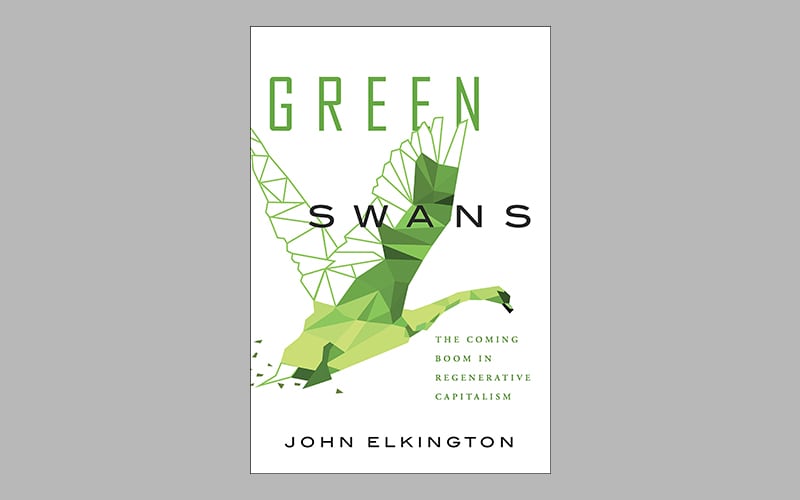 Green Swans: The Coming Boom in Regenerative Capitalism - John Elkington
Green Swans: The Coming Boom in Regenerative Capitalism - John Elkington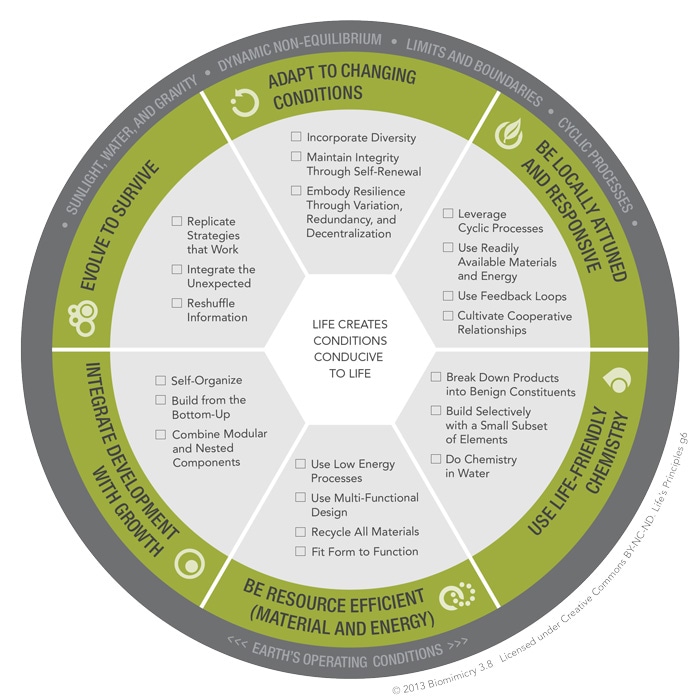 Biomimicry’s Life's Principles diagram - design patterns found in nature that support "success"
Biomimicry’s Life's Principles diagram - design patterns found in nature that support "success"Recommended Reading/Listening
- Podcast: The Tim Ferriss Show
- The Rich Roll Podcast
- Dr. Zach Bush
- Synapse , Biomimicry 3.8 blog
- The Biomimicry Institute
- asknature.org
- Zygote Quarterly

